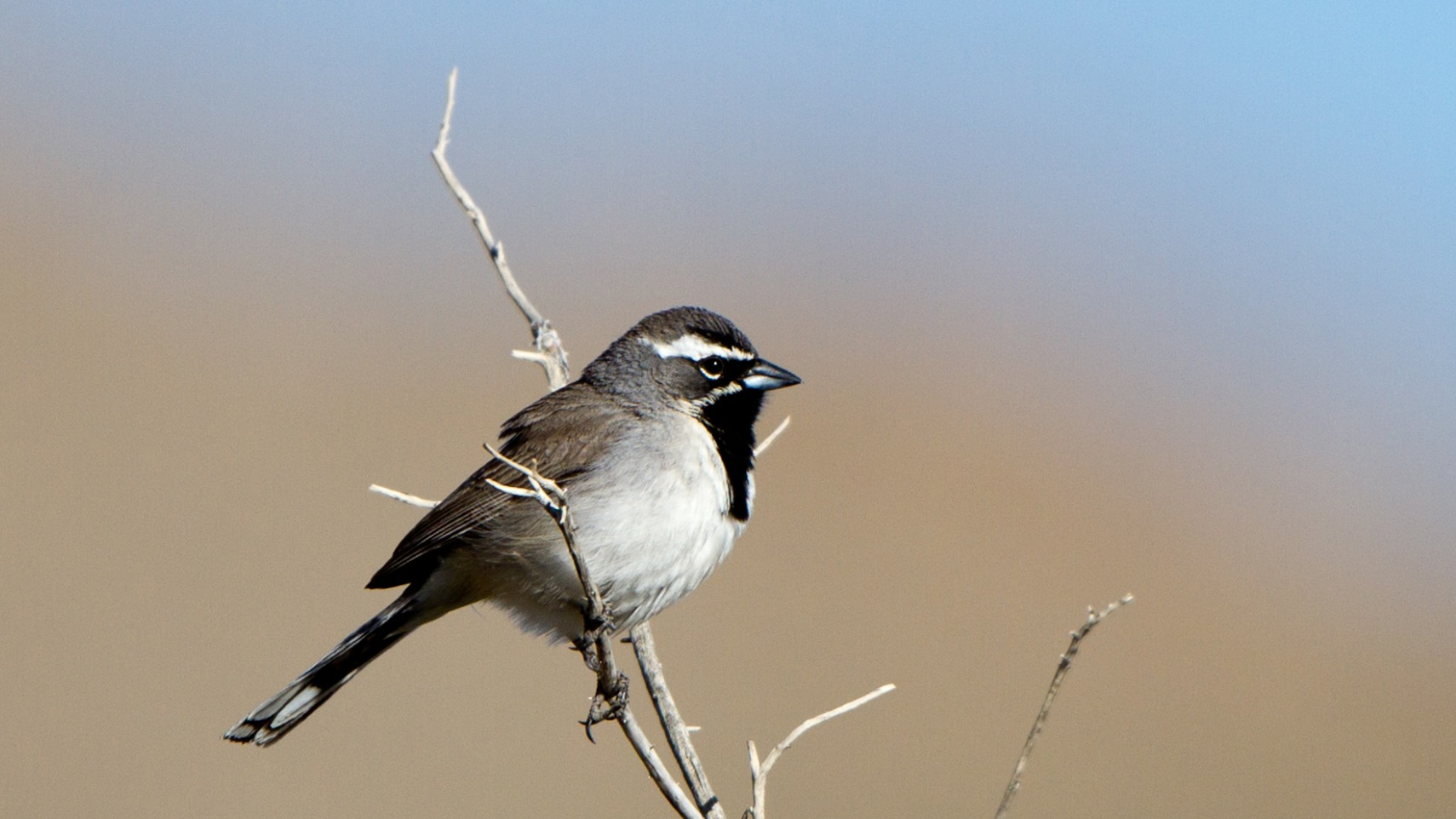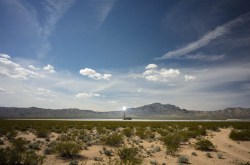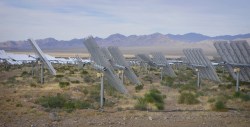Recent news reports that a giant solar power plant in the Mojave Desert is scorching birds in mid-air spurred a fierce debate over the environmental impacts of renewable energy, and left us all wondering whether we’ll be able to preserve the planet without destroying it in the process.
The questions come at an important moment, as the Obama administration is ramping up solar energy development on public lands. The Ivanpah Solar Electric Generating System, which the AP story covered, is currently the largest thermal solar energy plant in the world; it uses three roughly 450-foot “power towers” to concentrate the rays of 300,000 mirrors, creating a glaring “solar flux” field that does scorch at least a few birds (and irritate a few pilots).
The proposed Palen project is even bigger — promising to power over 200,000 homes instead of 140,000 — and will have two 750-foot towers instead of three 450-foot ones. That means its solar flux field will be three times the size of Ivanpah’s. And it’s slated for development just east of Joshua Tree National Park, near several wildlife refuges and along the Pacific Flyway, a key migration route.
So what do we really know about the impact of these facilities on birds and other wildlife? Fact is, not much.
Turns out that estimates for bird kills at Ivanpah are mind-bogglingly varied. Bird expert Shawn Smallwood testified before the California Energy Commission that if a two-month death rate, based on data from the spring, “persisted yearlong, then Ivanpah might be killing 28,380 birds” annually. BrightSource, one of the companies behind Ivanpah, claims that number is “science fiction” and is based on a “flawed scale-up approach.” It would prefer to point people to the only documented bird deaths at the facility: 321 in six months.
Both BrightSource and wildlife conservationists agree that more study is needed. (To that end, a bird and bat monitoring and management program is ongoing at Ivanpah.) While we can certainly feel a whole lot better about solar than, say, coal — even when it comes to bird death — we still know very little about these massive solar installations, the likes of which were unheard of just a few years ago.
What we can say with some certainty is that massive solar facilities, like wind farms, are probably not a huge threat to birds in general – both windows and housecats are far bigger culprits than renewable energy when it comes to avian deaths nationally.
Instead, what worries biologists — and the federal wildlife investigators who produced a report on avian mortality at Ivanpah and two other solar facilities this spring — is that building huge power-generating facilities of any kind in the middle of a natural ecosystem could become what they call a “mega-trap,” or a danger to an entire food chain.
It’s likely that both insects and birds are attracted to these solar arrays, either by the intensely bright light or by thinking that PV panels are lakes or perches. Insects are pollinators; they affect plants and agriculture. If insects are dying, that impacts lizards and other creatures that eat them. Birds, too: Some insect-eating birds that weren’t around before Ivanpah was built are now being found dead there.
In short, no one can really talk about bird death in a vacuum. “It’s a web of life,” says Ileene Anderson, senior scientist at the Center for Biological Diversity, one of the conservation groups originally opposed to the Ivanpah project. “We start taking pieces out, and it can quickly spiral into a big problem.”
The Center for Biological Diversity does think it’s a big problem. In 2009, it promised not to sue Ivanpah’s owners as long as they agreed to mitigate the project’s effects on the desert tortoise. Now, it’s threatening to sue the U.S. Department of the Interior over desert solar’s effects on the endangered Yuma clapper rail unless it and the Bureau of Land Management and U.S. Fish and Wildlife Service all conduct further investigations that yield more definitive results.
These solar energy plants are huge ecological experiments, says Anderson. “How many experiments do we need before we come to the right conclusions? Let’s be cautious and learn from the one that’s built before we start doing others.”
That runs pretty directly counter, however, to the Obama administration’s push for solar installations; in February, the administration approved two additional solar facilities near the California-Nevada border. And when it comes to California’s own renewable energy laws — among the strictest in the country — massive sun harvesters like Ivanpah and Palen are a big part of how the state plans to make that happen.
So what are we to make of the AP article’s claim that “biologists say there is no known feasible way to curb the number of birds killed”?
“‘No feasible way?’ That doesn’t resonate with me,” says Anderson. “I think we can do better.”
Government officials think so, too. That was at least one of the goals of the federal wildlife investigators’ report on avian death at solar plants this spring. (The report’s authors aren’t available for comment, since the document was designed to be internal and was only released to the public thanks to a Freedom of Information Act request.) Ivanpah’s bird and bat management program has a short list of mitigation efforts, too.
Among federal investigators’ “Avian Mortality Avoidance Measures”:
1) Break up the pattern on those solar panels. Birds and insects might think the panels are lakes or ponds; retrofitting visual cues by adding “solid, contrasting bands spaced no further than 28cm” on both existing panels and future designs could make them less appealing for landing or egg-laying.
2) Deter, deter, deter. Place perch and roost deterrents for birds and bats on panels, condenser facilities, everywhere. Cover any actual ponds with nets. Clear the vegetation around the “power towers,” to reduce the area’s attractiveness as a habitat. Ivanpah owners say they plan to use “radar and infrared systems” and even “sonic deterrent methods;” they’re also considering a switch to LED lighting that’d be less attractive to insects.
3) Suspend operation during peak bird migration times. This could hurt the solar facilities’ energy output (and their owners’ bottom line), so according to California Energy Commission testimony in June, no one’s totally convinced yet; it’d have to be really effective. It’s already happening at wind farms, though — why not solar?
4) Install video cameras to get better data. Even the best bird-carcass sleuths can’t catch everything (though they’re planning on using dogs, too). Having more real-time documentation in place will help everyone better understand what’s going on.
As with the attempts to reduce wind turbines’ impact on wildlife, these fixes seem simple — and plausible. It just remains to be seen how effective they’ll be.
In the meantime, Anderson says the Center for Biological Diversity wants solar energy developed at the site of consumption — that is, on people’s rooftops — so it wouldn’t disturb open spaces and wouldn’t require all that storage and transport.
So, Big Solar: bird killer or planet saver? Either way, it’s a tradeoff — the kind we’re going to have to make more and more of in our fast-warming world.





